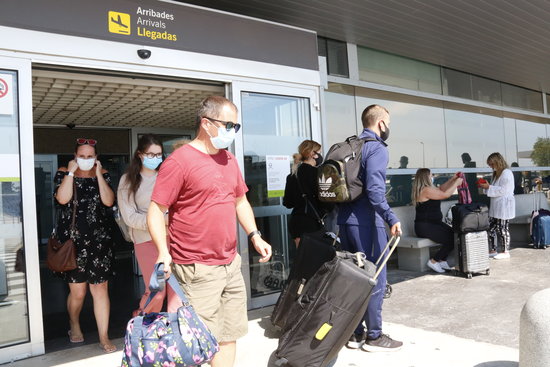Q&A: Travel rules and health and safety measures for visitors to Catalonia
Borders, hotels and restaurants are open but advice in many areas is stay at home

Article last updated July 28, 2020
Catalonia has been gradually opening up again after getting over the worst of the pandemic. With recent outbreaks however, some restrictions have been reintroduced. Here, Catalan News collates travel rules and health and safety measures of interest to visitors.
See also our guide to what you should, must and can't do after latest Covid-19 outbreaks.
Am I allowed to travel to Catalonia?
Spain reopened its borders on June 21, including the land border with France. Many countries, however, continue to advise against non-essential travel. The European Union has lifted its internal border controls within the Schengen area, and, citizens from the following countries may also enter Spain and Catalonia: Algeria, Australia, Canada, China, Georgia, Japan, Morocco, New Zealand, Rwanda, South Korea, Thailand, Tunisia, and Uruguay, as listed here on July 24.
Catalonia's airports are open, with Barcelona Airport's Terminal 2 opening on July 24 after a four-month closure. All passengers must fill out a health declaration form, online or using the Spain Travel Health app. Seven municipalities in the county of Segrià in the west of Catalonia, including the city of Lleida, have restrictions on entry and exit.
Are there obligatory quarantines if I return to my country from Catalonia?
On July 24, the French prime minister advised French citizens to avoid travel to Catalonia, while Norway announced that travelers arriving from Spain would have to quarantine for ten days. On July 25, Belgium banned its citizens travel to the Lleida region, affected by Covid-19 outbreaks. Anyone arriving in Belgium from Lleida will have to be in quarantine for 14 days and take a PCR test. Also on July 25 the UK announced the imposition of a 14-day obligatory quarantine to all travelers coming from Spain, which was due to come into effect on July 26 at 12am.
On July 28, Germany recommended its citizens not to travel to Catalonia unless for essential reasons, as well as the neighbouring Aragon region and Navarre.
What general measures are in place?
The use of face masks is obligatory at all times in public, both indoors and outside. Safety distances of 1.5m should be maintained when possible. You should wash your hands frequently, especially when entering or leaving any establishment. The Catalan health department has a full list of measures here.
There are additional measures in place in those areas where new outbreaks of coronavirus have been detected, including in the capital Barcelona and its metropolitan area. Here, the general advice to all members of the public is to stay at home.
Are tourist attractions open for sightseeing?
Museums, galleries and other tourist attractions have been gradually opening up again since June, and the vast majority are now operating again, with various safety restrictions. Gaudí's iconic Sagrada Familia in Barcelona reopens July 25.
What about hotels?
Hotels and tourist apartments are open. In areas with tighter restrictions, such as Barcelona, capacity in communal areas is capped at 50%.
What is the situation with bars and restaurants?
Cafes, bars, restaurants and terraces are open. In areas with tighter restrictions, such as Barcelona, there is table service only (no standing at the bar) and capacity is capped at 50%. Dancing in nightclubs is currently not allowed anywhere in Catalonia.
What about shops?
Shops are open but with the usual health and safety measures and limits on capacity.
Can I go to the beach? What measures are in place?
Beaches are open, with the general safety measures applying, including wearing masks and maintaining safety distances. Capacity is limited, with local police and councils monitoring visitor numbers.
Are natural parks open?
Yes, again, the general safety measures apply.